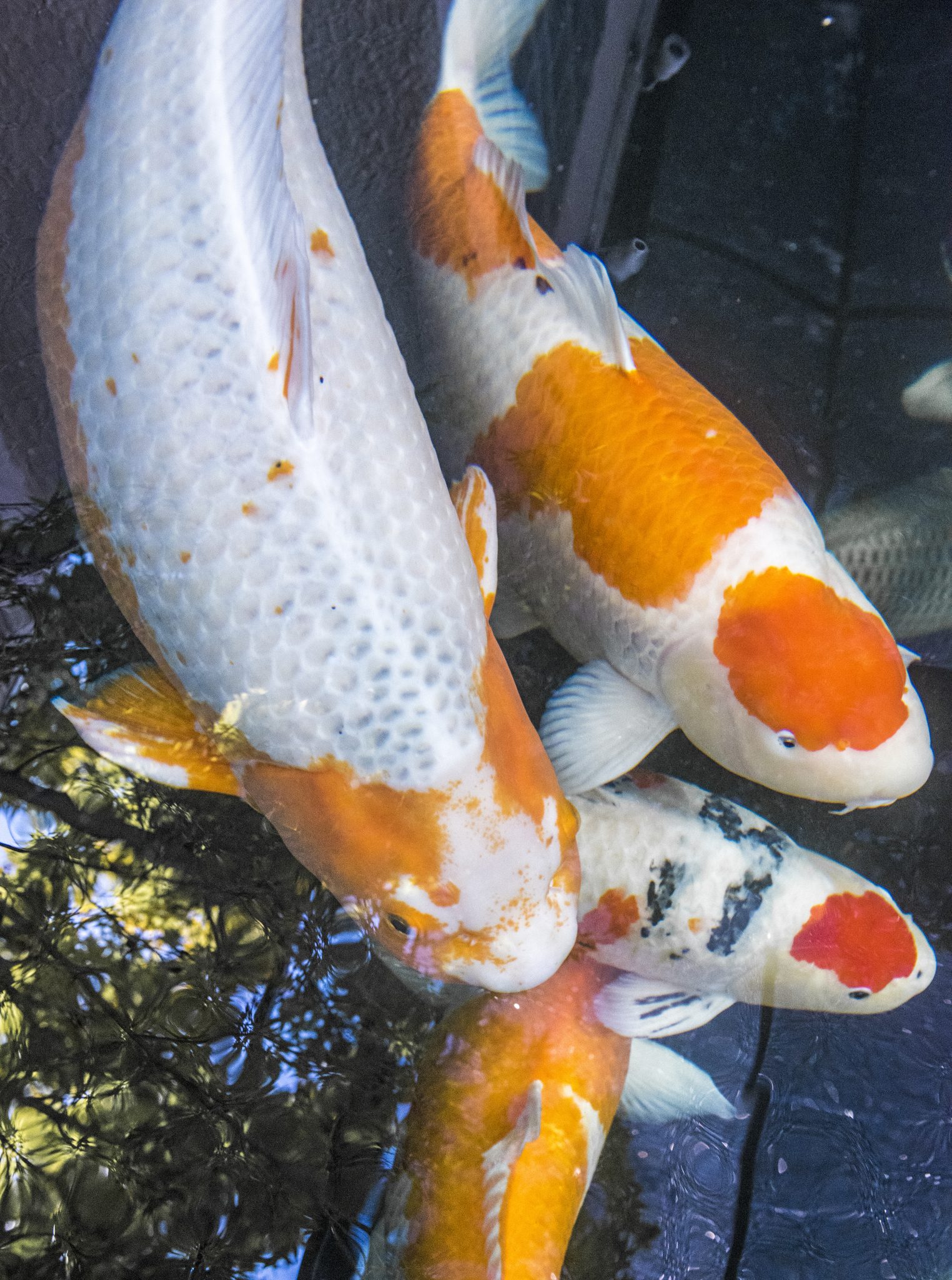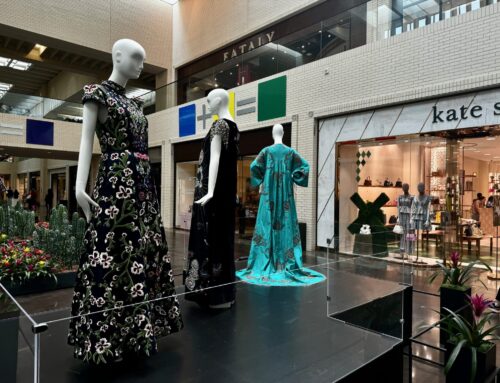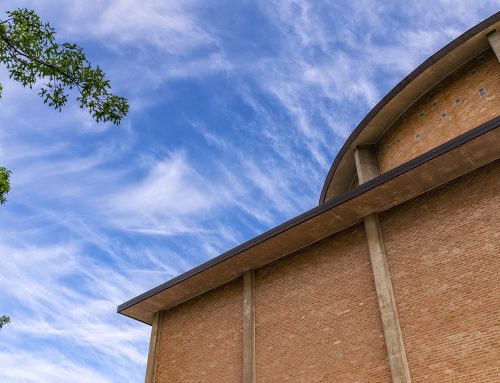The 40-pound koi swimming in the 10-foot pond behind an unassuming house are hardly coy. The $100,000 specimens have won pageants from England to Oklahoma and Houston. Dear-departed Nigel has been featured in “Koi2Kichi,” a book by Peter Weddington. He’s a rock-star among koi.
Beauty pageants for koi are a thing. In Japan, plastic surgery on koi is also a trend. Preston Hollow’s Dan Charnes is koi-kichi. Translation: koi crazy. For 18 years Charnes has been raising them like any good Texas beauty pageant mom. He has an eye for the beauties, buys low and nurtures natural genes, flying in expert help, watching their diets, providing plenty of filtered, heated water and overwhelming them with loving attention.
“We’ve stopped going to pageants. It’s a lot of effort. A lot of Xanax”
Judges give points for body shape, color, skin quality and the overall beauty of the koi. Owners receive extra points for the age of the fish. Older koi are bigger, which mean they are better cared for. The breed can live for 20 to 25 years.
 “It’s basically bragging rights,” Charnes says. “You get a trophy. We’ve stopped going to pageants. It’s a lot of effort. A lot of Xanax. These are my babies. I don’t want anything to happen.”
“It’s basically bragging rights,” Charnes says. “You get a trophy. We’ve stopped going to pageants. It’s a lot of effort. A lot of Xanax. These are my babies. I don’t want anything to happen.”
The first time he spent $500 on a fish, he thought he was crazy. “I don’t like to spend that kind of money on a fish, because they can die. The most I’ve spent is $15,000 on a koi. If you get to be a really good koi person, you can get them to grow.” Charnes’ strategy is to buy koi for a low price and raise them to be beauties.
How do koi travel? They’re put in water-filled plastic bags and shipped on planes. “We always go to England first,” Charnes says. Then the fish are quarantined and they rest a couple of months before a pageant. A vet must examine them to prove they’re healthy.
Charnes has two ponds in his backyard. The 5-foot pond houses the 3-year-old kohaku, which means “red-and-white fish.”
“I haven’t sexed her yet to see if she’s worthy to go to the main pond.”
The second-pond is 10-feet deep. The water has five filters and is heated. “My pool water is from the tap and not heated,” he says.
Charmes feeds the koi food from Japan every day at 5 p.m. It takes about an hour. Charnes uses a giant net from Japan to help position the koi for their photo shoot. Koi are photographed best from the top rather than from the side or the bottom, says Charnes, who has a penchant for wearing Hawaiian shirts.
“Come on, girls. Come on,” he says. “Look at the shine on the fish.”






